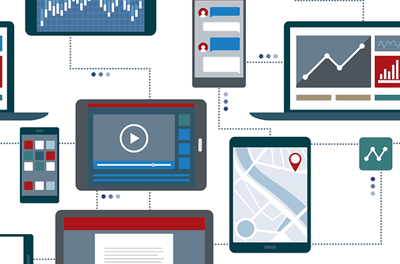 The days of doing business over fax or even snail mail are fading. This could be due in part to the fact that people within a company generally aren’t in a central office anymore — particularly now in the work-from-home world we live in. But ultimately it comes down to speed and clarity in communication.
The days of doing business over fax or even snail mail are fading. This could be due in part to the fact that people within a company generally aren’t in a central office anymore — particularly now in the work-from-home world we live in. But ultimately it comes down to speed and clarity in communication.
While today’s technology allows for people to work from virtually wherever, it’s still nice to have your necessary documentation in one central location, like an online Customer Portal. It allows you the opportunity to access essential records in one place any time that’s convenient for you. Oftentimes, that same technology that houses your documents also provides 24/7 tracking of your freight. That means you, as a shipper, can always be in-the-know when things change, whether it’s a new or updated document, or if there are changes with the truck en route. (It also helps to have a proactive logistics provider that makes communication a top priority).
Beyond visibility, going digital reduces delays. There’s no need to wait for a fax to arrive or an email being held up in a server somewhere waiting to get through because the file size is too big or the company won’t accept attachments. Now Drivers can get a piece of paperwork from a shipper, take a picture of it with their phone and upload it right away — leading to less downtime and faster invoices. That’s because the invoice that came directly from a shipper is exactly what goes into the system. There’s no need to manually type the information in — reducing the chance of human error.
Technology That Saves You Time and Money
The best freight brokerages have the resources to create proprietary software that increases efficiency. While you, as a shipper, may not directly interact with technology like a Carrier Portal, it directly benefits you.
Think about this. Carriers commonly use load boards to find freight. But if a solution existed where they could work directly with a broker that hand-picks freight for them based on what the broker knows they like, they’d likely choose that option. In turn, the logistics provider is able to develop a network of preferred carriers for any given projects, lanes or commodities. They can then decide who to award the freight to based on an internal rating system that determines who does what best. You end up the biggest winner of all in this scenario. Your freight is shipping with carriers the broker trusts the most when it comes to satisfying their customers and protecting your freight.
When carriers choose to add themselves to this “carrier portal,” they provide access to the location of their assets, allowing the broker can find the perfect truck for your freight quickly — getting it on the road and safely delivered faster.

But proprietary software doesn’t do you any good if you have to adapt your system to that software every time you work with a new broker. That’s why the best logistics companies create their technology in a way that integrates with leading logistics management technologies, like FourKites or TransFlo. After all, everyone has different needs when it comes to their shipping, so your 3PL provider should be flexible to adjust to your individual workflows — not the other way around.
In addition to the ability to offer systems that integrate easily with existing technologies, having in-house programmers allows brokers to further customize solutions to fit your needs. This ensures your individual needs don’t go unnoticed. When your sales or customer service representative can go directly to the team who designed the program and provide your feedback, you can get precisely what you need.
So when it comes time to evaluate your transportation partners, add technology to your list of things to consider when deciding who to align your business with. In an increasingly automated world, will you have 24/7 visibility, yet always have a person you can call if or when you need to? Do they have the technology that fits your business and are they able or willing to tailor it to your needs? After all, technology should enhance their service to you, not replace it.

